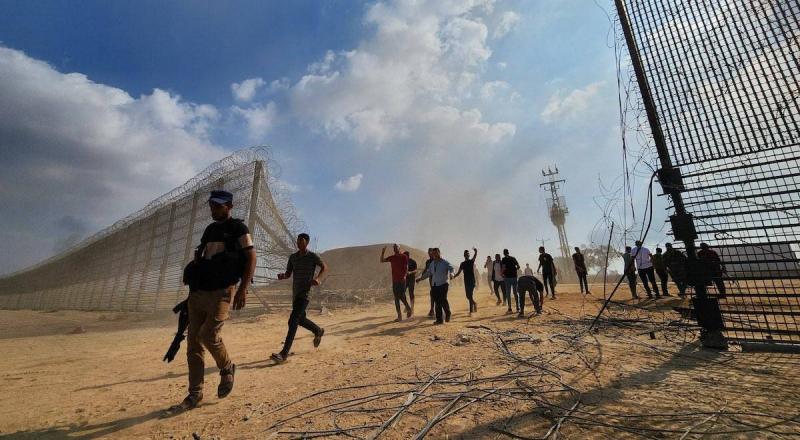Israeli broadcasting authority revealed an intelligence document prepared by the Israeli army last September, detailing training for elite units of the Izz ad-Din al-Qassam Brigades that included a large-scale assault on Israeli areas and the capture of between 200 and 250 Israelis. The document, prepared by the Gaza Division, indicated that intelligence leaders had formed a scenario regarding Hamas's plan to raid the Gaza Envelope and storm locations to kidnap hundreds of individuals less than three weeks before October 7.
In response to the broadcasting authority, the Israeli army confirmed that investigations are ongoing to draw lessons from these events, and results will be presented transparently to the public.
**Ignoring the Document**
Security officials stated that the document was known among senior intelligence agencies, at least within the Gaza Division. According to the report, the Gaza Division received the document right after its preparation but "almost completely ignored it." The intelligence document was issued just two weeks before the attack on October 7 and detailed the plan prepared by al-Qassam to raid and invade Israeli positions in the "Gaza Envelope," predicting the number of Israelis to be captured during the assault.
The source of the intelligence was an agency within the Gaza Division itself that prepared the document, which was issued on September 19 under the title "Detailed Invasion Training from Start to Finish." This document described a series of drills performed by elite units of Hamas, trained to raid military sites, kibbutzim, and capture soldiers and civilians.
**Details of the Operation**
The document highlighted details of several exercises conducted by the al-Qassam Brigades, stating that "at 11 AM, several companies were seen gathering for training, and equipment and weapons were distributed to the fighters only after the afternoon prayer at 12:00." Following that, a drill was conducted at the company command headquarters, and by 2 PM, the training on the assault began.
According to the document, the first step in al-Qassam's training was to open gaps in a simulated Israeli army site built in the Gaza Strip, which mimicked military locations in the "Gaza Envelope." This exercise was executed by four companies, with each assigned to raid and control a different military site.
The document described the targets Hamas intended to attack within the bases and military locations in the "Gaza Envelope," which included: "command centers, operational command posts, synagogues within military bases, air force facilities, automated targeting systems, and soldiers' quarters."
As per the document, "clear instructions were given to elite forces: the area must be searched upon leaving and no documents should be left behind." The report added that both the Southern Command intelligence and the Gaza Division were not only aware of Hamas's capture plan but had also specified conditions for the captives, including instructions for the captors and how to hold the prisoners.
The Israeli channel "Kan 11" reported that what the Gaza Division had prepared to deal with before the al-Qassam attack on October 7 was "the infiltration of dozens of saboteurs into just three locations."
**Suspension of the Investigation into the October 7 Attack**
On Sunday, Israel's Supreme Court ordered the suspension of the investigation into the "multi-level failures" related to the October 7 attack, which pertains to the army and the internal security service "Shabak."
Last December, State Comptroller Matanyahu Engelmayer began a broad investigation into Hamas's attack on October 7 and the causes leading up to it. However, "good governance monitoring groups" submitted a petition to the court to suspend the investigation on the grounds that "it is beyond the government's jurisdiction and will harm the operational capabilities of the Israeli army."
The Chief of Staff of the Israeli army, Herzi Halevi, also opposed the investigation as long as the war against Hamas, which commenced after the October 7 attack, continues.
In April, the Israeli army announced the resignation of the head of military intelligence after he acknowledged his "responsibility" for the failures during the October 7 attack, which sparked the outbreak of war in Gaza. In his resignation letter, the officer affirmed his responsibility for the failure to prevent the unprecedented attack on Israel.
Previously, General Avi Rosenfeld, the commander of the Gaza Division of the Israeli army, announced his resignation from his position and retirement from the army in January, as reported by the "World Arab News Agency." Rosenfeld stated in a statement that he "failed in his mission to protect the lives of residents in the border towns of Gaza."




